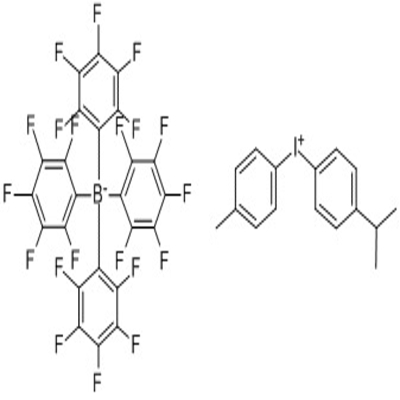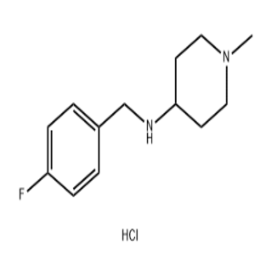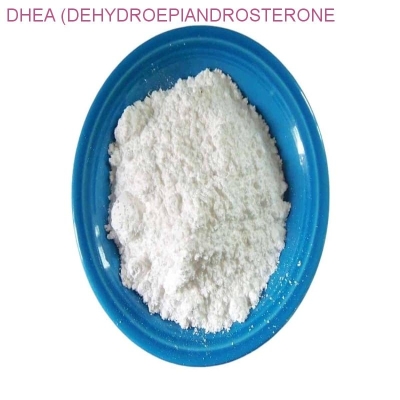-
Categories
-
Pharmaceutical Intermediates
-
Active Pharmaceutical Ingredients
-
Food Additives
- Industrial Coatings
- Agrochemicals
- Dyes and Pigments
- Surfactant
- Flavors and Fragrances
- Chemical Reagents
- Catalyst and Auxiliary
- Natural Products
- Inorganic Chemistry
-
Organic Chemistry
-
Biochemical Engineering
- Analytical Chemistry
-
Cosmetic Ingredient
- Water Treatment Chemical
-
Pharmaceutical Intermediates
Promotion
ECHEMI Mall
Wholesale
Weekly Price
Exhibition
News
-
Trade Service
Today, cancer patients have a variety of treatment options, but each has its drawbacks: chemotherapy kills rapidly dividing cancer cells, but it also damages healthy cells in the body and often does not effectively prevent tumor metastasis or disease recurrence.
these problems are avoided by acting on the patient's immune system to produce a sustained anti-cancer response, but the immunosuppressive local environment produced by the tumor often makes it difficult for immunotherapy to approach the tumor.
now, a new, two-and-a-side approach packages the anti-cancer capabilities of chemotherapy and the long-term efficacy of immunotherapy into a biomass-based cancer vaccine that can be injected near the tumor site.
100 percent of mice that were surgically removed from invasive triple-negative breast cancer (triple-negative breast cancer, TNBC) survived and did not relapse when they were vaccinated and challenged with cancer cells.
researchers from Harvard University's Wyss Institute for Bio-Inspired Engineering and John A. Paulson's School of Engineering and Applied Sciences reported the findings on November 10 in the journal Nature Communications.
Hua Wang, lead author of the nature Communications study, said: "Tumors like TNBC, which have poor immunogenicity, are still resistant to current immunotherapy.
in the new system we're developing, immunotherapy can attract large numbers of immune cells into tumors, and chemotherapy can produce large numbers of dead cancer cell fragments that immune cells can use to produce effective tumor-specific responses.
"s personalized, vaccine-ready cancer vaccine, first developed in 2009, offers great prospects for treating multiple cancers in mice and has conducted clinical trials to treat melanoma at the Dana Farber Cancer Institute.
In the original vaccine formulation, molecules found in cancer cells called tumor-related antigens (TAA) were combined with adjems in aspirin-sized stents so that the arriving adrenast cells could identify them as "foreign" and initiate an immune response to the tumor.
these TAS can be isolated from the collected tumors, sequenced by the genomes of cancer cells, and then produced, but both are long and expensive to make personalized cancer vaccines.
One of the key constraints to the development of a cancer vaccine is the choice of TAA, which bypasses the long and expensive antigen development process by implanting chemotherapy drugs in the vaccine stent, resulting in a large number of cancer cell deaths and freeing TAA directly from the tumor to dexterous cells, because we currently have only a very small pool of known antigens for a very small number of specific tumor cells," said co-first author Alex Najibi.
" synthesized cells (yellow) extract antigens from tumor cells and carry them to the lymph nodes and spleen, where they are presented to T-cells that immunely attack the tumor.
Wang, Najibi and colleagues at Harvard University's Wyss Institute are beginning to apply the new cancer vaccine strategy to TNBC.
team first loaded a protein molecule called granulocyte-macrophage collection stimulation factor (GM-CSF) onto the algal acid hydrogel stent.
GM-CSF stimulates the development and aggregation of dexterity cells, which absorb antigens from tumors and other invaders and present them to T cells in the lymph nodes and spleen to initiate an immune response.
added the chemotherapy drug Dox, which is linked to a peptide called iRGD.
iRGD is known to penetrate tumors and help target tumors after the release of amycin.
when the chemotherapy drug amycin (red) binds to the tumor-soaked molecule iRGD, it effectively penetrates into TNBC (blue) to attack them (left).
, which has not been modified, remains mainly in hydrogels and does not migrate to the tumor (right).
(Source: Harvard University Wyss Institute) When the TNBC model mice were given the new vaccine, mice that received GM-CSF and amycin-iRGD binding gels showed significantly better drug permeability to tumors, increased cancer cell death, and fewer lung metastasis tumors than those who received gels containing amycin-iRGD, unmodified amycin, or untreated groups.
of the gel stents showed that they had accumulated large amounts of adiotic cells, indicating that both immunotherapy and chemotherapy components of the vaccine were effective.
these results, the team then added a third ingredient, CpG, to the vaccine, a synthetic bacterial DNA sequence that has been shown to enhance the immune response.
mice vaccinated against the additive grew significantly faster and survived longer than mice vaccinated against the ingredient.
map of an in-place tumor vaccine consisting of biomass stents containing chemochemizing factors (GM-CSF), adverbants (TLR9 agitant CpG) and chemotherapy drugs (Dox-iRGD).
biomaterials are injected around the tumor, Dox-iRGD is released and penetrates the tumor, inducing immunogenic death of tumor cells, and releasing the degenerative factors that can accumulate large numbers of immature dexterous cells at the stent site.
aggesthetic cells can absorb and process tumor antigens and are activated by adjulytics to stimulate tumor-specific T-cells, killing tumor cells.
(Source: Nature Communications) To assess the strength and specificity of the immune response produced by the three-part vaccine, the researchers extracted and analyzed cells from the lymph nodes and spleen of mice.
surprising, 14 percent of lymph node-sourceD T cells respond to tumor cells, suggesting that they have been "trained" by a tree protrusion cell to target tumors.
, only 5.3 percent of T-cells and 2.4 percent of untreated mice received the two-part vaccine responded to tumor cells, respectively.
addition, giving a dose of "enhanced" vaccine 12 days after vaccination can further extend their survival.
local effects, long-term protection Although these results reveal the effects of vaccines on activating the immune system, the team also wanted to understand how it affects the micro-environment of local tumors.
analysis of the vaccine and nearby tumors showed an increase in calcium mesh protein on the surface of tumor cells treated with gels containing GM-CSF, Dox-iRGD and CpG, an indication of cell death.
, mice vaccinated against three groups also showed higher numbers of inflammatory macrophages, which were associated with increased anti-cancer activity and prolonged survival.
researchers also found that their treatment increased the expression of PD-L1, the surface protein of tumor cells, which tumors use to evade immune testing.
predicted that vaccine-combined anti-PD-1 therapy to stop this immune escape would help improve efficacy and tested it.
results showed a significant reduction in tumor size and number in mice treated with a gel vaccine and anti-PD-1, with an average survival of 40 days, while untreated mice survived 27 days and mice receiving PD-1 antibodies alone survived 28 days.
synergy suggests that vaccines may be best used in combination with checkpoint inhibitor therapies.
: At the end of the Nature Communications study, scientists also tested the ability of the new cancer vaccine to prevent cancer recurrence after primary tumors are removed.
they surgically removed the TNBC tumor from the mice and then injected a three-component gel vaccine or a liquid vaccine containing all ingredients near the site of the tumor's primary source.
tumor recurrence rate was significantly reduced in both treatment groups, but the gel vaccine slowed tumor growth significantly and improved survival rate.
then, the mice were challenged again by injecting cancer cells, and surprisingly, 100 percent of the mice vaccinated against the gel survived without metastasis, and all the untreated mice died of the disease.
. David J. Mooney, author of the Nature Communications newsletter, said, "This vaccine has a major advantage in triggering a strong immune response without the need to identify patient-specific antigens.
, the ability to deliver local chemotherapy drugs can avoid the serious side effects of systemic chemotherapy.
addition, the vaccine not only activates tumor-specific TAA dendrites in place, but also reshapes the tumor microenn environment, making the immune system more susceptible to tumors and producing immune memory to prevent further recurrence.
team is continuing to explore the combination of chemotherapy and cancer vaccines, hoping to improve their anti-cancer effectiveness against other hard-to-treat tumor models.
team hopes future studies will better understand and optimize the system so that it can enter clinical trials and ultimately benefit patients.
" cancer vaccine is a new multi-functional anti-cancer therapy that offers new hope for the treatment of a variety of cancers.
it is essentially a completely new form of combined chemotherapy that can be given with a single injection and may be more effective and less toxic than traditional therapies currently in use.
," concluded Dr. Don Ingber, founding director of the Wyss Institute at Harvard University.
reference: 1 s biomaterial-based cancer vaccine combines chemo and immunotherapy to treat triple-negative breast cancer (Source: Medical press) 2 s Hua Wang et al. Biomaterial-based scaffold for in situ chemo-immunotherapy to treat poorly immunogenic tumors. Nature Communications (2020)







